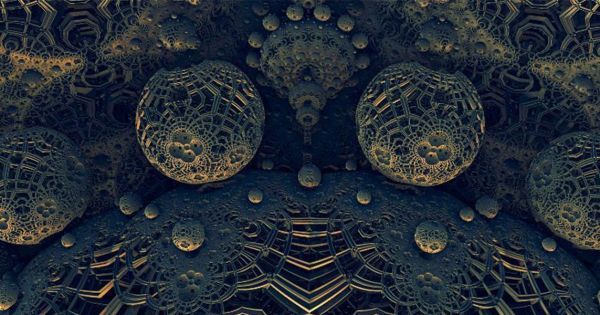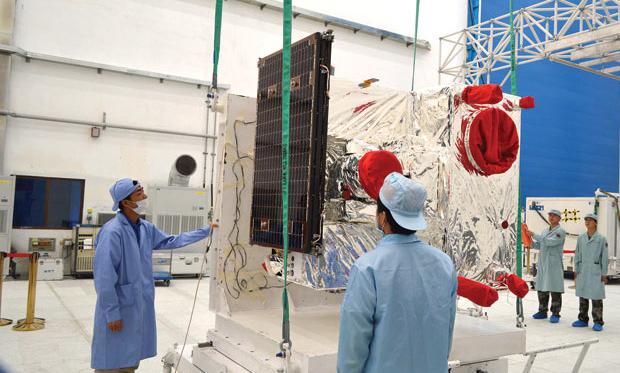Archive for the ‘quantum physics’ category: Page 753
Oct 28, 2016
First IEEE Conference on Rebooting Computing Focuses on Neuromorphic and Quantum Designs
Posted by Karen Hurst in categories: computing, neuroscience, quantum physics
I hope I get invited to speak. Would love to.
Researchers discuss how to make machines more like the human brain—and faster and more energy-efficient.
By MONICA ROZENFELD 28 October 2016
Oct 26, 2016
Super-Cool Quantum Research Lab Heads to Space
Posted by Karen Hurst in categories: particle physics, quantum physics, space
Just WOW!
PULLMAN, Wash., Oct. 26 — Washington State University and NASA scientists are set to begin an investigation into the strange world of quantum physics on the International Space Station.
WSU physicists Peter Engels and Maren Mossman are part of a team studying the behavior of atoms laser-cooled to temperatures just a few billionths of a degree above absolute zero, the point where they behave like one wave of discrete particles.
Continue reading “Super-Cool Quantum Research Lab Heads to Space” »
Oct 26, 2016
Quantum Bit MRI Machine to See Shapes of Individual Biomolecules for Drug Research
Posted by Karen Hurst in categories: biotech/medical, computing, particle physics, quantum physics
Drug discovery is a long and difficult process that requires a comprehensive understanding of the molecular structures of compounds under investigation. It’s difficult to have an idea of the precise shape of complex molecules such as proteins, but researchers at University of Melbourne in Australia have come up with a way of seeing the location of individual atoms within biomolecules.
Using quantum bits, most notably utilized in quantum computer research, the investigators offer a way of producing a magnetic resonance sensor and a magnetic field gradient that can work as a tiny MRI machine. The machine would have the resolution capable of seeing single atoms components of larger molecules. This MRI machine has yet to be actually built, but the steps have been laid out based on comprehensive theoretical work. If it proves successful in practice, the technology may overcome current imaging techniques that rely on statistical averages and don’t work well on molecules that don’t crystallize well.
“In a conventional MRI machine large magnets set up a field gradient in all three directions to create 3D images; in our system we use the natural magnetic properties of a single atomic qubit,” said lead author of the research Viktor Perunicic. “The system would be fabricated on-chip, and by carefully controlling the quantum state of the qubit probe as it interacts with the atoms in the target molecule, we can extract information about the positions of atoms by periodically measuring the qubit probe and thus create an image of the molecule’s structure.”
Oct 26, 2016
China’s 2,000-km Quantum Link Is Almost Complete
Posted by Karen Hurst in category: quantum physics
The Beijing-Shanghai project will form the backbone of the nation’s quantum communications network.
Oct 26, 2016
Precise quantum cloning: Possible pathway to secure communication
Posted by Karen Hurst in categories: encryption, quantum physics

Physicists at The Australian National University (ANU) and University of Queensland (UQ) have produced near-perfect clones of quantum information using a new method to surpass previous cloning limits.
A global race is on to use quantum physics for ultra-secure encryption over long distances according to Prof Ping Koy Lam, node director of the ARC Centre of Excellence for Quantum Computation and Communication Technology (CQC2T) at ANU.
Continue reading “Precise quantum cloning: Possible pathway to secure communication” »
Oct 25, 2016
The exciting new age of quantum computing
Posted by Karen Hurst in categories: biotech/medical, computing, encryption, military, quantum physics, security, space travel

What does the future hold for computing? Experts at the Networked Quantum Information Technologies Hub (NQIT), based at Oxford University, believe our next great technological leap lies in the development of quantum computing.
Quantum computers could solve problems it takes a conventional computer longer than the lifetime of the universe to solve. This could bring new possibilities, such as advanced drug development, superior military intelligence, greater opportunities for space exploration and enhanced encryption security.
Continue reading “The exciting new age of quantum computing” »
Oct 25, 2016
QST And Osaka To Collaborate On Quantum And Radiological Research
Posted by Karen Hurst in category: quantum physics
Based on the conclusion of this agreement, QST and Osaka University will greatly contribute to the promotion of science, technology and academia, and the creation of innovation in a variety of different fields. The institutes will create a new framework for collaboration and cooperation through the use of the research and development ability, state-of-the-art facilities, and human resources.
In addition, under this agreement, QST Kansai Photon Science Institute and the Osaka University Institute of Laser Engineering have simultaneously concluded a memorandum for cooperation in light and quantum beam science.
It is hoped that the development and utilization research of internationally-competitive power lasers will be greatly accelerated through systematic collaboration.
Continue reading “QST And Osaka To Collaborate On Quantum And Radiological Research” »
Oct 25, 2016
Scientists Generate the Fastest Electric Current Ever Measured Inside a Solid Material
Posted by Karen Hurst in categories: computing, mobile phones, particle physics, quantum physics
Using ultrafast laser flashes, physicists from the Max Planck Institute have generated the fastest electric current that has ever been measured inside a solid material.
In the field of electronics, the principle ‘the smaller, the better’ applies. Some building blocks of computers or mobile phones, however, have become nearly as small today as only a few atoms. It is therefore hardly possible to reduce them any further.
Another factor for the performance of electronic devices is the speed at which electric currents oscillate. Scientists at the Max Planck Institute of Quantum Optics have now created electric currents inside solids which exceed the frequency of visible light by more than ten times They made electrons in silicon dioxide oscillate with ultrafast laser pulses. The conductivity of the material which is typically used as an insulator was increased by more than 19 orders of magnitude.
Oct 25, 2016
From the X-Files Dept: “Quantum Tunneling May Trigger Destruction of the Cosmos” (VIEW VIDEO)
Posted by Karen Hurst in categories: existential risks, particle physics, quantum physics

Oh boy!
Space vacuum that appears to be stable due to the complete absence of substance in it, is likely to be fraught with great danger. The idea about the destruction of the universe is based on the hypothesis of vacuum instability. Any system in our world has a certain amount of potential energy. But, space vacuum is not as empty as it may seem to be. Vacuum in space is filled with quantum particles, which, in turn, may seek their own “stability” to annihilate the material world in its entirety during the process.














